UPDATE: See bottom of entry
Is this art? I saw this piece Train Landscape, 1952-53 by Ellsworth Kelly during a recent visit to the Art Institute of Chicago. It’s three colored panels that are connected together.
link to: The Art Institute of Chicago Train Landscape, 1952-53 page
Granted, my cutting and taping job is a little crooked, but if I spend more than 30 seconds doing it, I might be able to get everything lined up better.
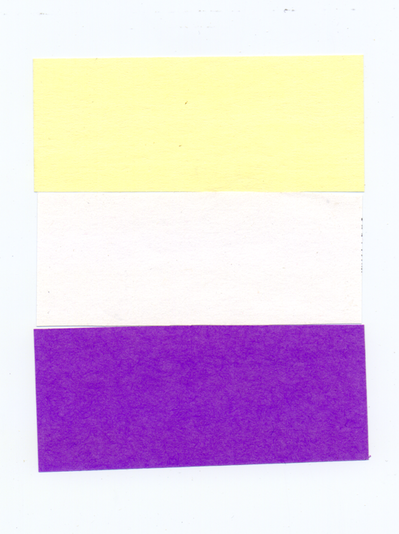 I believe that many things can be considered art, but to me good art needs to show some skill in its creation.
I believe that many things can be considered art, but to me good art needs to show some skill in its creation.
UPDATE: Thanks to Visualingual
for the correction of the name Ellsworth Kelly. Perhaps I was a little too simplistic and quick to judge so I Googled an explanation
of the painting.
Another ongoing catalyst for Kelly is Cézanne’s use of color
to create form. Cézanne endeavored to capture his sensations of nature
directly, through color, rather than constructing an illusion of
reality, with the painting as a sort of window onto the world. In Mont
Sainte-Victoire Seen from Les Lauves, Cézanne divides his canvas into
three bands of color, effectively flattening the deep perspective of a
mountain view and bringing it right up to the picture plane, with dabs
of color that sit directly on the painting’s surface. As if boiling
Cézanne’s painting down to its essential parts, Kelly’s Train Landscape
consists of three monochrome horizontal panels, joined together to
create an effect of space and surface similar to the Mont
Sainte-Victoire. Kelly first conceived of Train Landscape while looking
out a moving train’s window onto an expanse of mustard growing in a
field, but his process of painting is less about representing a
landscape in a recognizable way, and more about being true to his
perceptions of nature. Kelly’s planes of single colors take Cézanne’s
sensation to an extreme conclusion, and in turn help us see Cézanne’s
painting in a new way. Through Kelly’s eyes–and those of all the
artists in Cézanne and Beyond– Cézanne’s work continues to reveal its
complexity, richness, and, most of all, its relevancy.
Here’s Cézanne’s piece: Mont Sainte-Victoire Seen from Les Lauves, 1902-1906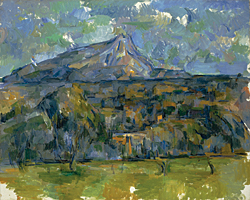 Here’s Ellsworth Kelly’s piece: Train Landscape, 1952-1953
Here’s Ellsworth Kelly’s piece: Train Landscape, 1952-1953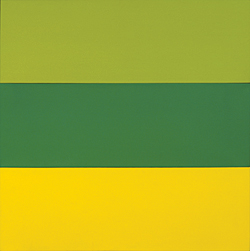 I believe I understand what Ellsworth Kelly’s idea is, a minimalist representation of a landscape view from a train, but even knowing this, I still find the work to be pretty weak.
I believe I understand what Ellsworth Kelly’s idea is, a minimalist representation of a landscape view from a train, but even knowing this, I still find the work to be pretty weak.
I do like the Cézanne, though.
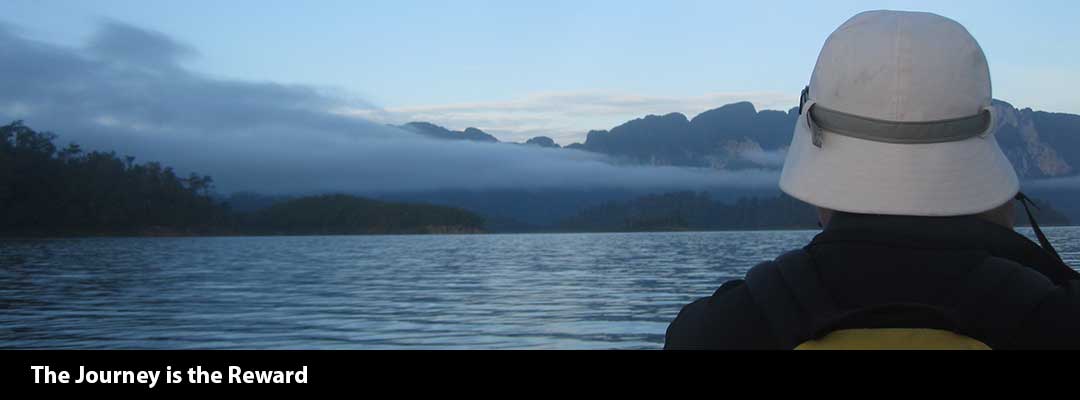
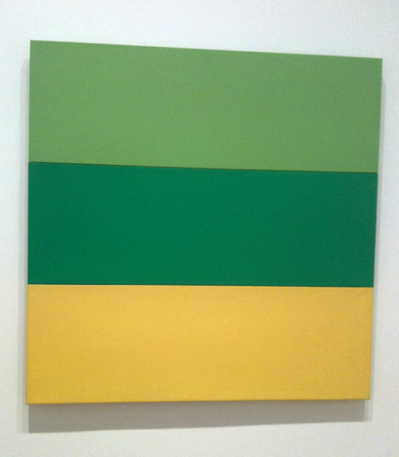
2 Comments
It’s Ellsworth Kelly, not Kelly Ellsworth. The “skill” you mention can lie in the idea, not just in the technical execution.
Thanks for the correction! That was a pretty bad mistake. I saw it quickly and transposed it my mind. Shows how much I know about art.